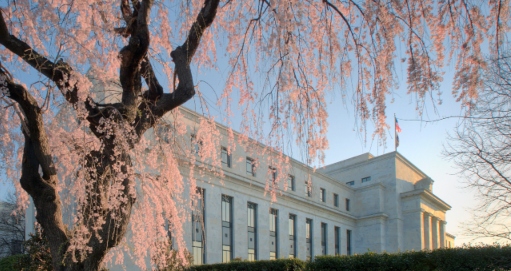by Sonal Desai, Ph.D., Chief Investment Officer, Franklin Templeton Fixed Income
The US Federal Reserve (Fed) just announced (on Sunday, March 15) a massive and well-crafted policy response to the coronavirus shock.
A number of commentators have quickly criticised it or dismissed it, arguing that no amount of monetary stimulus can get people back to the malls or the restaurants when they are worried about contagion. Some argue that for the same reason, fiscal policy will also be toothless. I could not disagree more, for the following reasons:
- The measures announced today by the Fed—and the fiscal measures under consideration—will help businesses stay open and will reduce the number of layoffs. The people who, thanks to the Fed or the government, keep their job, or have more cash in their pockets thanks to fiscal policy, will still not go to the mall, but they will shop online, they will order food for home delivery, they will not cancel their mobile phones. All this has a positive effect on spending today and through the contagion period;
- Once contagion is contained and extreme social distancing stops, hopefully within 4-6 weeks, the economic recovery will be faster and stronger if more businesses have been able to stay open and more people have kept their jobs through the worst of the crisis;
- This will be a temporary shock. Monetary and fiscal policy do not need to get people back to the shopping mall or on a flight, they need to keep them employed and spending on other things while the crisis lasts, and ready to go back to the mall or the airport when it stops. Monetary and fiscal policy are not expected to boost production in the factory facing weaker demand, they are aimed at helping the factory stay open until demand recovers.
- Finally, putting in place extraordinary monetary and fiscal measures today is what will allow us to have a strong, hopefully V-shaped recovery once contagion is contained. As the health emergency recedes, having extremely supportive monetary and fiscal conditions already in place will make a massive difference.
Now the details of the announced monetary measures:
- It cut the policy interest rate by 100 basis points (1 percentage point), all the way to the zero bound;
- It relaunched quantitative easing (QE) with a vengeance, announcing the purchase of at least $700 billion of assets, including $500 billion in Treasuries and $200 billion in mortgage-backed securities (MBS).
- It enacted a battery of measures to support credit to households and businesses, including:
- Cutting the primary credit rate by 150 basis points (bps) to 0.25%;
- Allowing depository institutions to borrow at this lower rate at its discount window for 90 days (the normal limit is overnight);
- Encouraging banks to use their capital and liquidity buffers to lend to the private sector, and to take recourse to the intraday credit provided by reserve banks;
- Slashing the reserve requirement ratio to zero.
- In coordination with the European Central Bank (ECB), the Swiss National Bank, the Bank of England, Bank of Japan and Bank of Canada, the Fed will provide US-dollar liquidity at 84-day maturity through foreign exchange swap lines; the rate on the facility has been cut by 25bps, to overnight index swaps plus 25bps.
Importantly, Chairman Jerome Powell stressed that (1) This new round of QE will “start strong” with aggressive asset purchases starting March 16, and it will be conducted with full flexibility to respond to economic and market developments, rather than on a fixed monthly purchase schedule as in previous occasions; (2) The Fed will keep interest rates at zero until it has full confidence that the economy has weathered the shock and is back on track to its employment and inflation target—the strongest possible form of forward guidance.
The Fed’s response is—in my mind—not only powerful in size but also very well crafted.
The US economy, already hit by the coronavirus impact on global supply chains, is about to suffer the consequences of domestic measures necessary to bring contagion under control. Small businesses will be hit especially hard, and some have already started laying off employees. Larger companies will also be hit by lower demand and further disruption in supply chains.
The policy priority should therefore be to (1) ensure that businesses have the credit access they need to weather the storm; (2) provide income and health care support to workers who will lose their jobs or see their hours and compensation significantly reduced; and (3) provide additional financial assistance to the business sector as needed.
With the actions just announced, the Fed is doing its part. Most important in my view is the strong element of regulatory forbearance: the Fed has stated loud and clear that banks should now prioritise lending to households and businesses; prudent capital and liquidity buffers have been required exactly to prepare for a contingency such as the current one, and now is the time to use them.
Right on cue, the ten biggest US banks have already announced that they will immediately focus their efforts on lending to “individuals, small businesses and the broader economy” and will suspend any share buybacks through June.
A Strong Fiscal Policy Package Will Be Key
To be fully effective, this monetary response needs to be complemented by stronger fiscal policy measures, with the latter being of greater importance. An important package is already making its way through Congress; it includes federal support to help businesses provide two weeks of paid sick leave and up to three months of paid family and medical leave. The US government has stressed this is only one part of a multi-pronged fiscal effort and that additional measures could include refundable tax credits to provide quick cash support to individuals, as well as targeted financial help to the hardest-hit industries, such as airlines, hotels and cruise lines.
Some commentators have already raised eyebrows at the possibility of bailouts. I completely disagree. We are talking about businesses and employees hit by a truly exogenous and unpredictable shock, without being guilty of any imprudent behavior. A bailout in this situation would not raise moral hazard risks.
And I can’t believe I am saying this, but if the situation worsens significantly this could be the time to launch a time-bound universal basic income programme (UBI); it would not be a true UBI, because it would be limited in time, but a worst-case scenario would in my view justify a blanket income support measure, forsaking targeting and means-testing for the sake of speed of action. This would offer income security to workers in the most precarious positions (wait staff at restaurants for example), acting as a bridge to when the economy normalises.
In my view, the government should consider extending unlimited loan guarantees to small businesses—Germany recently launched a similar measure. Government guarantees would ensure that banks can extend loans “in a safe and sound manner” as the Fed recommends.
An even stronger step would be for the Fed to invoke its emergency powers under Section 13 (3) of the Federal Reserve Act, in consultation with the Treasury Secretary and Congress—as explained in the March 15 Wall Street Journal by former Fed Governor Kevin Warsh. This would allow the Fed to set up a new credit facility that would allow private banks to underwrite loans that would be then priced by the Fed at favorable spreads and backstopped by the Treasury.
Asked about Section 13 (3), Powell confirmed it is indeed part of the Fed’s arsenal, stating “We have nothing to announce on 13 (3) powers, but that’s part of our playbook in any situation like this, so as I said, we’re prepared to use our authorities as is appropriate to support borrowing and lending in the economy and hence to support the availability of credit to households and businesses.”
All these measures would necessarily imply a massive increase in the fiscal deficit and a rise in the debt-to-gross domestic product (GDP) ratio. This would be fully warranted given the magnitude of the shock; once the economy has begun to stage a robust recovery, policymakers will have to focus on reducing the fiscal deficit and the monetary overhang—but that is tomorrow’s problem, not today’s.
Powell Rises to the Occasion
Chairman Powell delivered a commanding performance: he stressed that the Fed has abundant ammunition and will do whatever it takes to support the economy through the shock and beyond; he praised the fiscal response already underway while indicating that more is needed; and he reminded everyone that while the intensity and duration of the shock is still unknown, we do know that it is a temporary shock and the economy will then recover. He also noted that the US economy came into this shock on a strong footing, with robust employment and healthy financial conditions—this doesn’t make the shock any less dramatic, but it does imply the economy is in a better position to withstand the blow.
Powell’s performance made a stark contrast with ECB President Christine Lagarde, who spent most of last Thursday’s ECB press conference lecturing governments and explaining what the ECB should not do. Lagarde seemed to be still wearing her International Monetary Fund (IMF) hat, not realizing that the IMF can afford to lecture governments, but in a crisis central banks need to step in decisively while governments get their act together.
What Lies Ahead For the Economy and Markets
In the United States, the first quarter will be weak and the second quarter will most likely see a sharp contraction in economic activity. Beyond that, as Powell emphasised, much will depend on how the coronavirus contagion plays out in the coming 4-8 weeks.
My baseline is that the United States, through the aggressive containment measures currently being deployed, will be able to bring contagion under control in the coming 4-6 weeks, allowing for a subsequent relaxation of measures such as the current extreme social distancing. If the monetary measures just announced are soon backed up by a decisive fiscal package, we should see a very sharp but relatively brief contraction in economic activity followed by a robust, potentially V-shaped recovery on the back of extraordinary fiscal and monetary stimulus. Growth for 2020 as a whole would still be significantly lower than I had previously anticipated, but the US economy would avoid a recession this year and enter 2021 with strong momentum.
If instead the impact of the virus proves more intense and protracted, paralysing economic activity through the summer, the economy will likely suffer a recession for 2020 as a whole, and then go through an initial phase of slow recovery before being able to stage a more decisive acceleration.
The already elevated uncertainty on how contagion plays out in the United States is compounded by uncertainty on how other economies around the world will be affected. Evidence available so far shows that we could see very different outcomes: South Korea was severely impacted at first but has been very successful in quickly containing the virus; Italy by comparison appears as the most severely affected.
Hopefully, countries which are hit by contagion at a later stage will be able to capitalise on the lesson offered by these early cases.
Given the uncertainty, we are in for a period of extremely high market volatility before investors can gain better visibility on the outlook. Early reaction to the Fed announcement makes this abundantly clear. I believe we need rapid fiscal action over the coming week or two, concurrent with a clear sign that Covid-19 testing has picked up in the United States. Note that once testing picks up, we will undoubtedly also see a sharp rise in identified cases—this should be expected, together with additional market nervousness.
And while this note is focused on the economic and financial impact, the primary concern of course remains for the health and human impact of this outbreak.
The shock we are facing will have a stronger health and economic impact than most of us anticipated—myself included. But today’s Fed announcements, following Friday’s White House press conference on the health policy response, confirms that US policymakers fully realise the magnitude of the challenge and are determined to respond in full force.
To get insights from Franklin Templeton delivered to your inbox, subscribe to the Beyond Bulls & Bears blog.
For timely investing tidbits, follow us on Twitter @FTI_Global and on LinkedIn.
Important Legal Information
This material is intended to be of general interest only and should not be construed as individual investment advice or a recommendation or solicitation to buy, sell or hold any security or to adopt any investment strategy. It does not constitute legal or tax advice.
The views expressed are those of the investment manager and the comments, opinions and analyses are rendered as of publication date and may change without notice. The information provided in this material is not intended as a complete analysis of every material fact regarding any country, region or market.
Data from third party sources may have been used in the preparation of this material and Franklin Templeton (“FT”) has not independently verified, validated or audited such data. FT accepts no liability whatsoever for any loss arising from use of this information and reliance upon the comments, opinions and analyses in the material is at the sole discretion of the user.
Products, services and information may not be available in all jurisdictions and are offered outside the U.S. by other FT affiliates and/or their distributors as local laws and regulation permits. Please consult your own professional adviser or Franklin Templeton institutional contact for further information on availability of products and services in your jurisdiction.
Issued in the U.S. by Franklin Templeton Distributors, Inc., One Franklin Parkway, San Mateo, California 94403-1906, (800) DIAL BEN/342-5236, franklintempleton.com—Franklin Templeton Distributors, Inc. is the principal distributor of Franklin Templeton’s U.S. registered products, which are not FDIC insured; may lose value; and are not bank guaranteed and are available only in jurisdictions where an offer or solicitation of such products is permitted under applicable laws and regulation.
What Are the Risks?
All investments involve risks, including possible loss of principal. The value of investments can go down as well as up, and investors may not get back the full amount invested. Bond prices generally move in the opposite direction of interest rates. Thus, as prices of bonds in an investment portfolio adjust to a rise in interest rates, the value of the portfolio may decline. Investments in foreign securities involve special risks including currency fluctuations, economic instability and political developments. Special risks are associated with foreign investing, including currency fluctuations, economic instability and political developments; investments in emerging markets involve heightened risks related to the same factors. Actively managed strategies could experience losses if the investment manager’s judgment about markets, interest rates or the attractiveness, relative values, liquidity or potential appreciation of particular investments made for a portfolio, proves to be incorrect. There can be no guarantee that an investment manager’s investment techniques or decisions will produce the desired result.
The post On My Mind: The Fed Speaks Loudly and Carries A Big Stick appeared first on Beyond Bulls & Bears.
This post was first published at the official blog of Franklin Templeton Investments.















